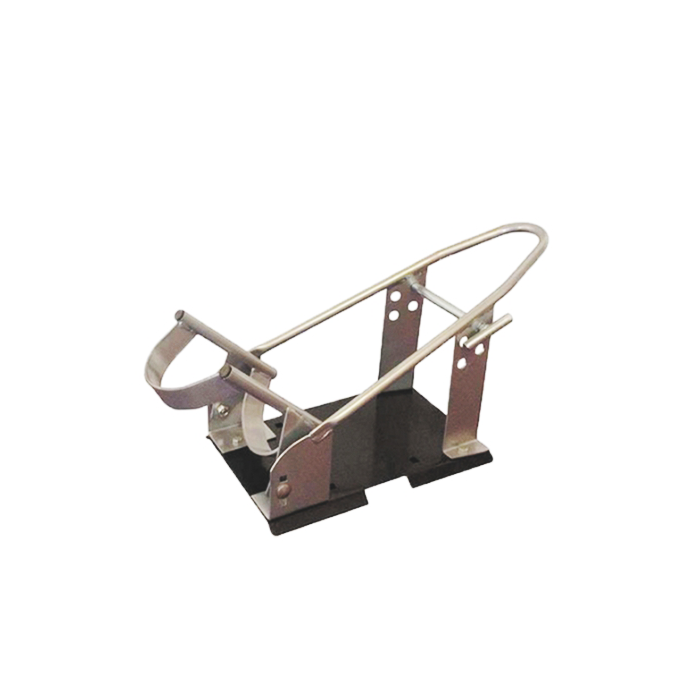How to Prevent Tire Damage When Using a Wheel Chock?
Preventing tire damage while using a motorcycle wheel chock is crucial for maintaining your bike's safety and performance. To safeguard your tires, ensure proper alignment when positioning your motorcycle in the chock, use a high-quality wheel clamp designed for your specific bike model, and avoid overtightening. Regularly inspect your tires for signs of wear or damage, and rotate your motorcycle's position in the chock to prevent prolonged pressure on one spot. Additionally, consider using tire covers or padding in conjunction with the wheel chock for extra protection, especially during long-term storage. By following these precautions, you can effectively use a wheel chock while minimizing the risk of tire damage.

Understanding Motorcycle Wheel Chocks and Their Impact on Tires
What is a Motorcycle Wheel Chock?
A motorcycle wheel chock is a device designed to secure and stabilize a motorcycle by holding its front wheel in place. It's an essential tool for transportation, storage, and maintenance of motorcycles. Wheel chocks come in various designs, from simple V-shaped cradles to more complex mechanisms with adjustable features.
How Wheel Chocks Interact with Tires?
When a motorcycle is placed in a wheel chock, the front tire bears most of the weight and pressure. This interaction between the chock and the tire can potentially lead to tire damage if not managed properly. The pressure points created by the chock can cause deformation, flat spots, or even structural damage to the tire over time.
Common Tire Issues Associated with Improper Chock Use
Improper use of wheel chocks can result in several tire problems. These may include flat spots from prolonged static pressure, sidewall damage from misalignment, and accelerated wear patterns. In extreme cases, improper chocking can lead to tire bead separation or compromise the tire's internal structure.
Best Practices for Using Motorcycle Wheel Chocks
Selecting the Right Wheel Chock
Selecting a suitable motorcycle wheel clamp or wheel chock is one of the most important steps in preventing unnecessary tire wear or damage. Riders should choose a chock that matches their motorcycle’s tire size, weight capacity, and riding style. Some advanced chocks are designed with adjustable arms or clamps that can fit different tire widths and profiles, offering greater flexibility. Opting for models with smooth, rounded edges helps reduce concentrated pressure points on the rubber, allowing for safer and more reliable tire support during storage or transport.
Proper Alignment and Positioning
Correct alignment is critical when securing your motorcycle in a wheel chock. The front tire should be positioned squarely in the middle of the chock to ensure even weight distribution and minimize sidewall stress. If the bike is angled or off-center, uneven forces may be applied, leading to deformation or premature tire wear. Take the time to carefully adjust and reposition until the motorcycle is stable, balanced, and centered. This attention to detail ensures greater safety and preserves tire integrity over time.
Regular Inspection and Maintenance
Consistent inspection of both the wheel chock and the tires is essential for long-term reliability and safety. Look for signs of damage such as sharp edges, rust, or worn parts on the chock that could harm the tire’s surface. Similarly, check your tires for early warnings like unusual wear, cracks, or discoloration that may result from excessive pressure. Keeping the chock clean, rust-free, and well-lubricated ensures smooth contact with the tire, while proactive maintenance helps extend the life of both your equipment and your motorcycle’s tires.
Advanced Techniques for Tire Protection
Utilizing Tire Covers and Padding
Adding tire covers or specialized padding provides an extra layer of defense when using a motorcycle wheel clamp or wheel chock for motorcycle storage. These accessories not only help distribute pressure more evenly across the tire surface but also act as a barrier against dust, moisture, and temperature changes that can accelerate wear. Some riders place foam inserts or rubber mats between the chock and the tire to reduce direct contact. This simple yet effective step helps minimize the risk of flat spots while extending the tire’s overall service life.
Implementing Rotation Strategies
When storing a motorcycle for weeks or months, keeping the tire in the same position for too long can create uneven pressure and potential flat spots. A rotation strategy addresses this issue by periodically moving the motorcycle slightly forward or backward in the wheel chock. This adjustment changes the contact point on the tire and ensures pressure is not concentrated in a single area. Over time, this habit helps preserve tire shape, reduces the likelihood of deformation, and supports more consistent tire performance once the bike is back on the road.
Integrating Tire Pressure Management
Maintaining proper tire pressure is essential for protecting tires during extended use of a wheel chock. Overinflated tires place unnecessary stress on the tread, increasing the chance of distortion, while underinflated tires cause sidewall flexing that weakens structural integrity. To avoid these issues, riders should regularly monitor and adjust tire pressure to match the manufacturer’s guidelines. Checking before storage and after long periods in the chock ensures tires remain in optimal condition, providing greater safety, reliability, and longevity for the motorcycle.
Conclusion
Preventing tire damage when using a motorcycle wheel chock requires a combination of proper equipment selection, correct usage techniques, and regular maintenance. By understanding how wheel chocks interact with tires and implementing best practices, riders can effectively secure their motorcycles without compromising tire integrity. Remember to choose the right chock, align your bike properly, and incorporate additional protective measures like tire covers and rotation strategies. With these precautions in place, you can confidently use wheel chocks while preserving the longevity and performance of your motorcycle tires.
Contact Us
For more information on our range of high-quality motorcycle wheel chocks and maintenance tools, please contact us at info@runva.com.cn. Our team of experts is ready to assist you in finding the perfect solution for your motorcycle storage and maintenance needs.
References
Johnson, M. (2021). Motorcycle Tire Care and Maintenance: A Comprehensive Guide. Rider's Digest Publishing.
Smith, A. (2020). The Impact of Storage Methods on Motorcycle Tire Longevity. Journal of Motorcycle Engineering, 15(3), 78-92.
Thompson, R. (2019). Advanced Techniques in Motorcycle Maintenance. Moto Tech Press.
Garcia, L. (2022). Preventing Flat Spots: A Study on Long-Term Motorcycle Storage. Bike Care Quarterly, 7(2), 45-58.
Wilson, K. (2018). The Science of Motorcycle Wheel Chocks. Two-Wheel Technology Review, 12(4), 112-125.
Brown, T. (2023). Innovations in Motorcycle Tire Protection. Rider's Tech Journal, 9(1), 23-37.

_1737625693698.webp)

